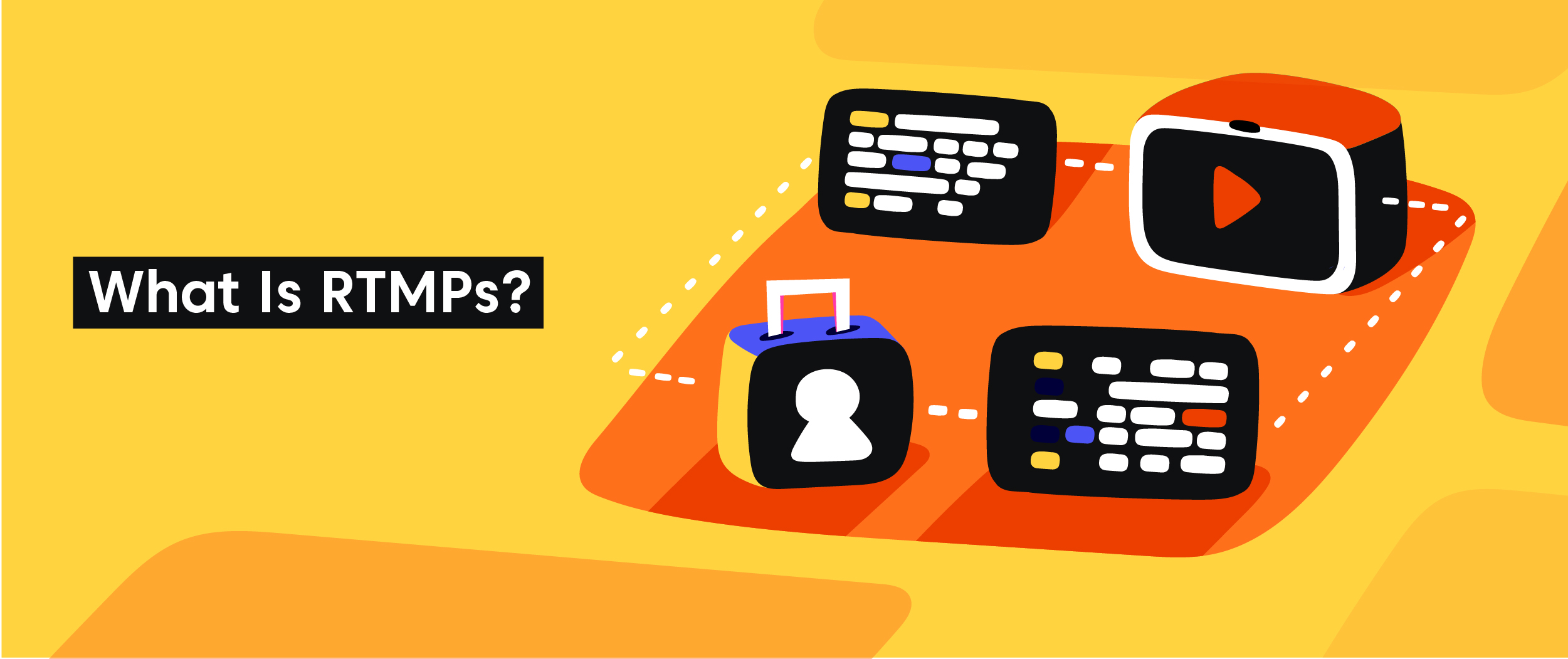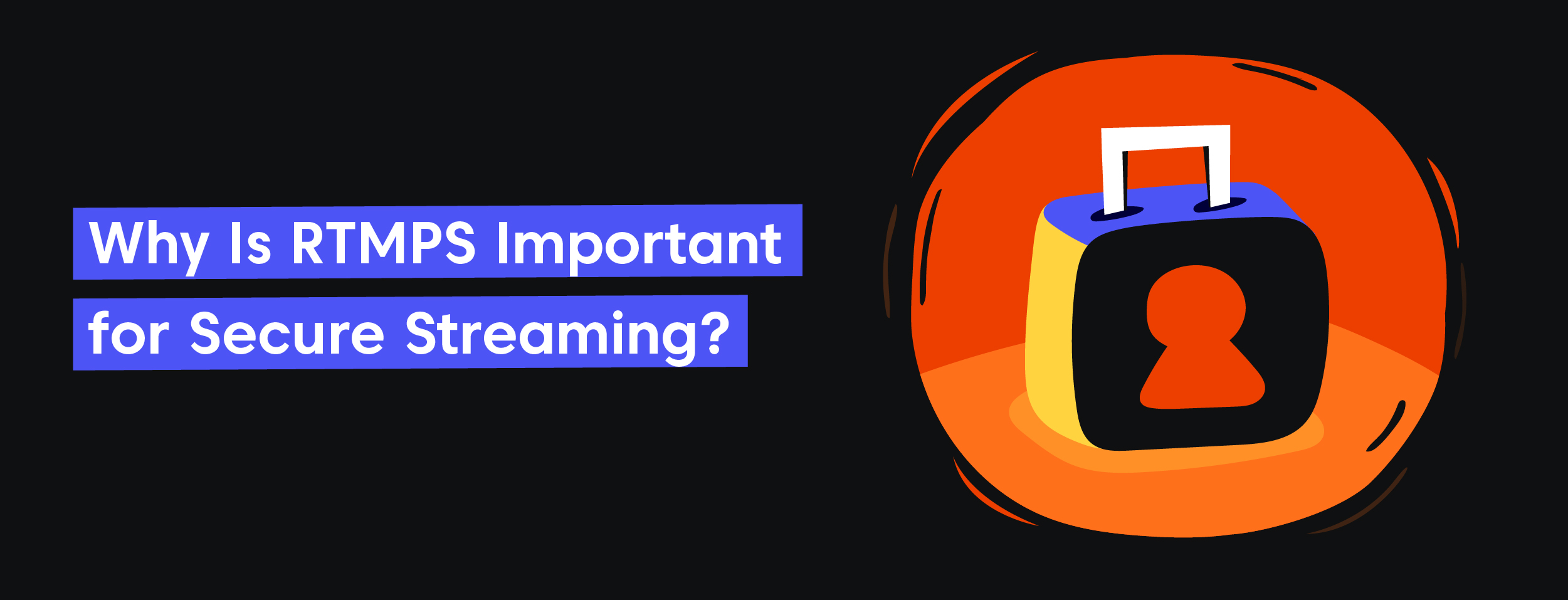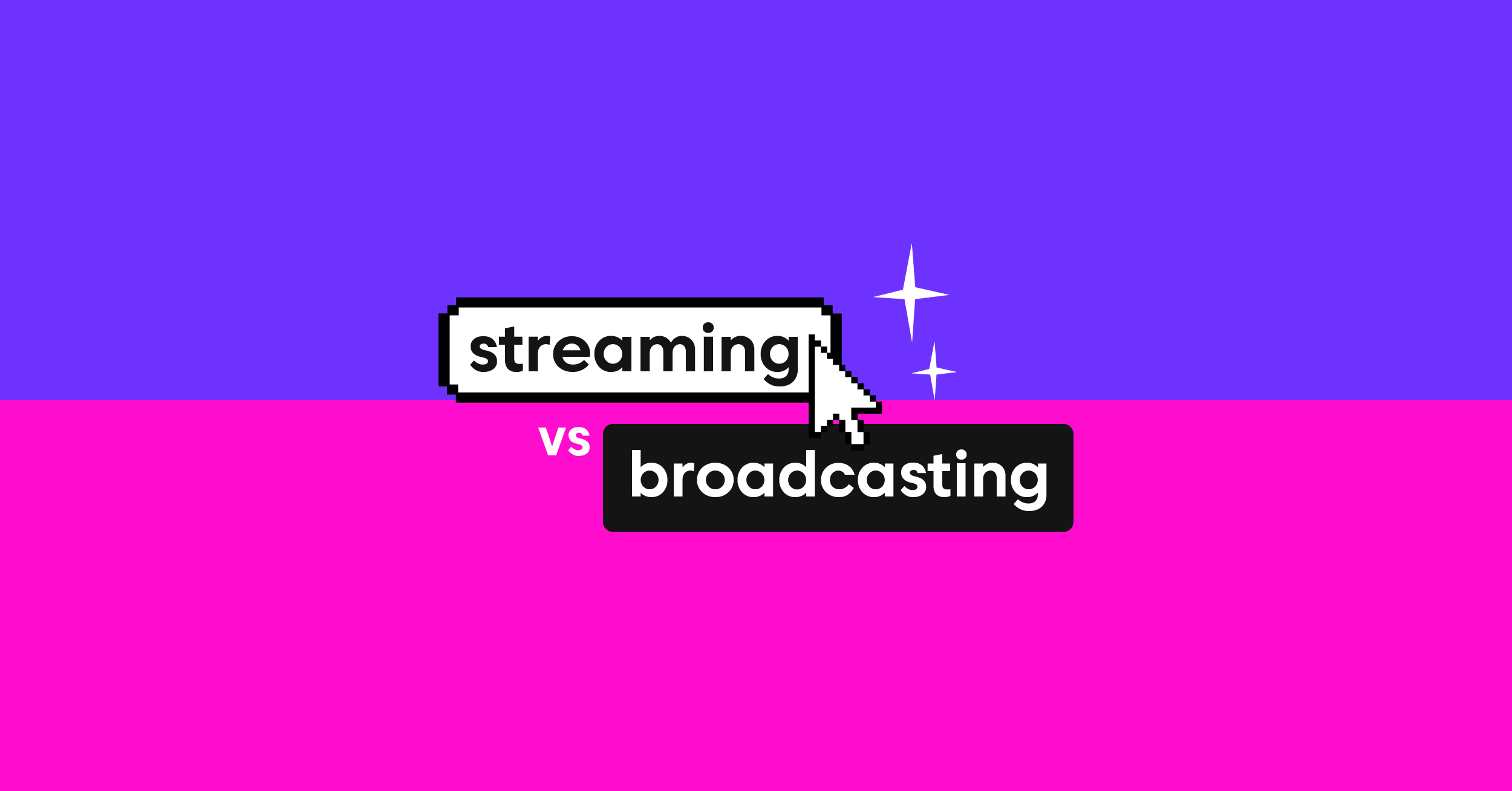Streaming has become an essential aspect of the digital world, and its increasing popularity requires the implementation of secure streaming methods. One notable example of such a method is RTMPS.
In this article, we will delve into the nature of RTMPS, its functionality, and its significance in ensuring secure streaming. Additionally, we will explore the advantages of using RTMPS for streaming purposes and make comparisons with other protocols such as RTMP and RTSP. Moreover, we will provide instructions on how to establish an RTMPS server using Castr and Wowza, along with outlining a streamlined process for secure streaming utilizing RTMPS and DASH.
Lastly, we will examine the topic of mobile streaming security and present strategies for protecting live streams from mobile devices through the utilization of RTMPS. Join us on this informative journey as we explore the world of RTMPS and its role in maintaining the safety and security of your streams.
What Is RTMPs?

RTMPs stands for Real-Time Messaging Protocol with enhanced security measures, ensuring data encryption to prevent unauthorized access or tampering. This protocol offers versatility, supporting various applications such as live streaming, video on demand, and interactive functionalities. However, to establish secure communication, it requires the usage of an SSL/TLS certificate.
Real-Time Messaging Protocol RTMP Encoding
The encoding process of RTMPS is a vital component of the secure version of the Real-Time Messaging Protocol (RTMP) utilized for streaming video, audio, and data online. This protocol employs encryption techniques to establish secure communication between the server and client, ensuring the highly protected transmission of data. Many media companies and broadcasters rely on this protocol to safeguard their content against unauthorized access. Due to its ability for low-latency broadcasting, its popularity has increased significantly recently, especially on websites like Twitch and Facebook.
The widespread adoption of RTMPS can be attributed to its compatibility with various technologies and platforms. It seamlessly integrates with Adobe Flash Player, hardware encoders like OBS Studio, CDN networks, and popular video platforms such as YouTube and LinkedIn, and even enables browser-based playback through HTML5 video players that support RTMP technology.
What is RTMPS Protocol?
RTMPs is an acronym for Real-Time Messaging Protocol Secure. It is a secure version of the RTMP protocol used for video streaming that utilizes encryption to protect data during transmission. RTMPs is frequently used for various purposes, including live streaming events, webinars, and online gaming.
Why Is RTMPS Important for Secure Streaming?

RTMPS is crucial for secure streaming because it encrypts the data, providing an added layer of protection against unauthorized access or interception. Without encryption, sensitive information could be compromised. RTMPS guarantees the confidentiality and security of streamed content.
The Benefits of Using RTMPS for Streaming
RTMPS is a streaming protocol that provides users with several benefits. It offers added security to data during transmission using encryption technology, thus protecting against unauthorized access or interception of the live stream. With RTMPS, you can have better control over who accesses your live stream through the authentication and authorization process.
Additionally, it ensures the integrity of streamed content by detecting tampering attempts. By preventing unauthorized redistribution of content, RTMPS helps protect both brands and reputations.
RTMPS vs. RTMP: Understanding the Differences
RTMPS, or Real-Time Messaging Protocol Secure, is a streaming protocol that encrypts data to safeguard against unauthorized access and hacking attempts. This secure version of RTMP uses SSL/TLS encryption for added protection. By prioritizing the use of RTMPS over unsecured RTMP, broadcasters ensure the safety and integrity of their video content during transmission.
Video platforms like Twitch and YouTube require RTMP streaming through RTMPS for enhanced security measures. Using an encoder with built-in support for RTMPS ensures live stream without compromising on security.
Other RTMPS Variations to Consider
When it comes to RTMPS variations for streaming servers, there are several options available.
- One of the most popular ones is RTMPS, which provides SSL/TLS encryption for secure video streaming over the internet.
- Another option is RTMPe which involves encrypted streams and keys to add an extra layer of security. For token authentication in live streams, you can use RTMPt instead of using password-protected URLs or embedding authentication tokens into your video data packets directly.
- Lastly, there’s also the option of utilizing RTMPT that encapsulates your RTMP stream within HTTP packets so as to improve cross-network compatibility with firewalls and proxies.
RTMP Proper
RTMP Proper is the original RTMP protocol that remains a popular choice for live streaming due to its reliable delivery of video and audio streams. It offers encryption for secure streaming, making it ideal for sensitive content. Despite its popularity, RTMP Proper has some limitations such as high latency and difficulty in scaling to large audiences. This can be overcome by using low-latency streaming solutions like HLS or by incorporating hardware encoders into the workflow.
With advancements in technology, RTMP Proper continues to be a reliable option for broadcasters seeking high-quality playback on platforms like Twitch, YouTube, Facebook, or LinkedIn without compromising on security.
Low Latency Streaming Using RTMP Protocol and HLS
For achieving low-latency video streams, broadcasters often use RTMP or HLS protocols. While RTMP offers faster video data transfer rates with low-latency playback, HLS boasts of high-quality video and audio playback on a public network. When these two methods are combined, content creators and distributors have a greater tool for reaching viewers everywhere, from Twitch and YouTube to Facebook and LinkedIn.
Factors like bitrate, bandwidth availability, hardware encoder support & CDN capacity play a vital role in deciding the right protocol for live streaming. Notably, following proper handshake & encryption procedures while setting up the server using RTMPS ensures the safe transmission of video packets over the internet.
Understanding the Handshake and Encryption in RTMPS
Secure streaming is key in today’s internet landscape, and that’s where RTMPS comes in. It’s a secure version of the RTMP protocol that involves exchanging keys between servers and clients to verify their identities. Encryption is then used to safeguard data transmission during streaming.
When implemented with encryption methods, RTMPS provides additional security features like SSL, TLS, or HTTPS. Therefore, RTMPS has you covered with high-quality, low-latency streaming protocols that use packets of data to guarantee smooth playing across all devices and browsers, whether you’re live streaming on Twitch or YouTube or simply watching videos on web platforms like Facebook or LinkedIn.
How to Set Up an RTMPS Server Using Castr and Wowza

To ensure secure live streaming, it’s important to set up an RTMPS server using either Castr or Wowza. Castr requires creating an account and generating a stream key, while Wowza involves installing the software and configuring it with SSL certificates. Both platforms offer features like transcoding, adaptive bitrate streaming, and analytics to enhance your live streaming experience.
With minimal streaming being crucial for real-time applications like gaming and live events, setting up an RTMPS server can provide video quality to viewers on Twitch, Facebook, LinkedIn, or any other online video platform.
Encoder Support for RTMPS
When setting up an RTMPS server for high-quality live streaming, it’s crucial to ensure that your encoder supports the protocol. Compatible encoders are available on popular platforms like Castr and Wowza. Alternatively, you can use open-source software like OBS Studio for encoding low-latency video data. It’s important to have the correct URL and unique stream key to connect your encoder to the RTMPS server securely. By checking compatibility beforehand and following these guidelines, you can enjoy uninterrupted live streaming on social media platforms such as Twitch, Facebook, Youtube, or LinkedIn.
HTTP vs. TLS in RTMPS
To ensure secure live streaming using RTMPS protocol, HTTP vs. TLS encryption comparison is important. While HTTP is for non-secure streaming, TLS ensures end-to-end security protection with its strong encryption capabilities. Setting up an RTMPS server can be done through platforms like Castr or Wowza, but proper configuration with SSL certificates is necessary to enable encryption and enhance security features. Protecting online video content from unwanted access or interference requires reliable solutions such as RTMPS protocol and proper setup with TLS encryption.
Workflow for Secure Streaming Using RTMPS and DASH
If you’re looking for a secure streaming solution, consider using RTMPS and DASH protocols. By encrypting data during transmission with an SSL certificate installed on your server, RTMPS ensures that your streamed content is protected from unauthorized access. You can also use DASH to create a manifest file which divides the video into smaller chunks and makes it easier to stream online. With this secure workflow for encoding video content and distributing it via a CDN platform such as YouTube or Twitch–you’ll be able to offer high-quality live streaming even in low-bandwidth networks.
RTMPS mobile streaming – How to Secure your Live Streaming from Mobile Devices?
To secure your mobile live streaming via RTMPS, choose a trustworthy platform with RTMPS support. Encrypt the video stream with SSL or TLS protocols and restrict access to the link using passwords or access codes. Keep your device’s security software and firmware updated for added protection.
How RTMP Streaming Works
RTMP (Real-Time Messaging Protocol) is an open-source streaming protocol that facilitates instant media transmission between server and client without any hindrance in playback. Using User Datagram Protocol (UDP) or Transmission Control Protocol (TCP connection), the protocol transfers bytes of data known as packets. Using this protocol, broadcasters can effortlessly deliver live videos to their users with low latency over public networks.
RTMP supports adaptive bitrate streaming, making it perfect for delivering online videos with varying bandwidths. Its integration with HTTP Live Streaming (HLS) lets you stream flawlessly across different devices and browsers like Safari and Chrome. On Twitch, Facebook, YouTube, LinkedIn, and other well-known networks, RTMP technology is still extensively used for live streams.
How the RTMP Connection Works
A communication connection between the server and the client can be formed thanks to Real-Time Media Flow Protocol (RTMP). Streaming audio & video using RTMP ensures low latency & high-quality video playback that makes it perfect for live streaming applications. Packets of data are transferred securely through an encrypted connection that offers extra security to your content while streaming over a public network or the internet.
RTMP has found wide acceptance on platforms like Facebook Live, YouTube Live & Twitch. This open-source protocol was developed by Macromedia and later acquired by Adobe & Flash Player was incorporated into it. RTMP was originally based on Flash Media Server.
What is RTMP Server?
A server that streams data, audio, and video over the internet is known as an RTMP server. Numerous well-known services, including Twitch, Facebook Live, and YouTube, support this commonly used protocol for live streaming.
RTMP servers are typically used to stream live video from a camera or encoder to a website or app. The server breaks the live stream into small chunks, which are then sent over the internet to the client. The client reassembles the chunks and plays the video in real-time.
Here are some of the benefits:
- Minimal latency streaming
- Widely supported by popular platforms
- Easy to set up and use
- Scalable to handle large audiences
Here are some of the popular RTMP servers:
- Castr
- Wowza Media Server
- OBS Studio
- nginx
- Red5 Pro
- Ant Media Server
What is RTMP Ingest?
A method of transferring live RTMP streams to a server using the RTMP is known as RTMP Ingest. This involves capturing, encoding, and distributing video for low-latency streaming. This protocol is commonly used on video streaming platforms and can improve the overall viewing experience.
RTMP vs. RTSP
Streaming media has seamlessly integrated itself into the fabric of the internet. Real-Time Streaming Protocol (RTSP) and Real-Time Messaging Protocol (RTMP) are two extensively used protocols for media streaming. RTMP excels in live video streaming scenarios, while RTSP is more suitable for on-demand video streaming.
Unlike RTSP, which establishes separate connections to transmit data of audio and video, RTMP utilizes a single connection that optimizes the efficient transfer of data packets across public networks. Besides ensuring low latency and exceptional playback and encoding quality, RTMP enhances security by encrypting the entire transmission process.
RTMPS Publishing
RTMPS publishing is a secure version of the RTMP protocol used for transmitting video data over the internet. It encrypts video streams using SSL/TLS encryption, ensuring they remain protected from unauthorized access when streamed on public networks. RTMPS is commonly used by broadcasters on streaming platforms like Twitch and Facebook Live to protect their content from hackers.
To establish an RTMPS stream, you need an SSL certificate and a server that supports it. For live streaming applications requiring low latency, RTMPS can ensure high-quality playback without compromising security.
Why RTMPS is important to encrypt and secure video stream
Businesses handling sensitive information must ensure secure transmission of their video content. RTMPS is a significant protocol that helps ensure security by encrypting the data during transmission. As an upgraded version of the Real-Time Messaging Protocol (RTMP), it provides better security measures and enables businesses to avoid potential legal liabilities seamlessly.
RTMPS supports various formats such as HLS and HTTP Live Streaming for efficient video streaming over public networks. The technology has helped broadcasters deliver high-quality live streams on popular platforms such as YouTube, Facebook Twitch, and LinkedIn using hardware encoders or RTMP encoder software such as OBS Studio or Wowza media servers.
Conclusion
RTMPS stands out as an exceptionally secure streaming protocol that prioritizes the protection of your content, ensuring utmost safety and privacy. By implementing encryption, it fortifies the transmission of data between the server and the client, effectively bolstering protection against malicious attacks.
The advantages associated with adopting RTMPS for both live and on-demand streaming purposes are plentiful. These include its user-friendly nature, delivering high-quality video and audio outputs, minimal latency, and extensive compatibility across various devices and platforms.
Frequently Asked Questions
What is the difference between HTTPS and RTMPS?
HTTPS and RTMPS are two protocols designed to ensure secure online experiences. HTTPS specifically focuses on protecting web browsing activities, whereas RTMPS is tailored for secure video streaming. Both protocols utilize encryption to protect data while it’s in transit, but they differ in the scope of their encryption.
HTTPS encrypts the data exchanged between a user’s web browser and a web server, providing security during general web browsing. On the other hand, RTMPS encrypts the data transmitted between a client and server, primarily used for live and on-demand streaming purposes. By using HTTPS, users can browse the web securely, while RTMPS enhances the safety of video streaming activities.
Is it better to use RTMPs or MP3?
It’s not a matter of which is better, as RTMPs and MP3 serve different purposes. RTMPs stream video and audio content securely, while MP3 stores digital audio files. The choice depends on the project’s specific needs and goals.
Why do you need to use RTMPs when using an audio player?
Using RTMPs with an audio player is crucial to prevent hacking and unauthorized access. Without it, the player may be vulnerable to security threats, compromising transmitting data integrity. Moreover, RTMPs guarantee the secure delivery of high-quality content, streaming data and can improve playback performance while reducing latency.
Is there any drawback to using RTMPs?
There are some drawbacks to using RTMPs, such as the need for dedicated server space or a third-party provider and limited device/browser support. Additionally, RTMPs may require more bandwidth. However, the increased security and reliability of RTMPs often make them worth using despite these downsides.









